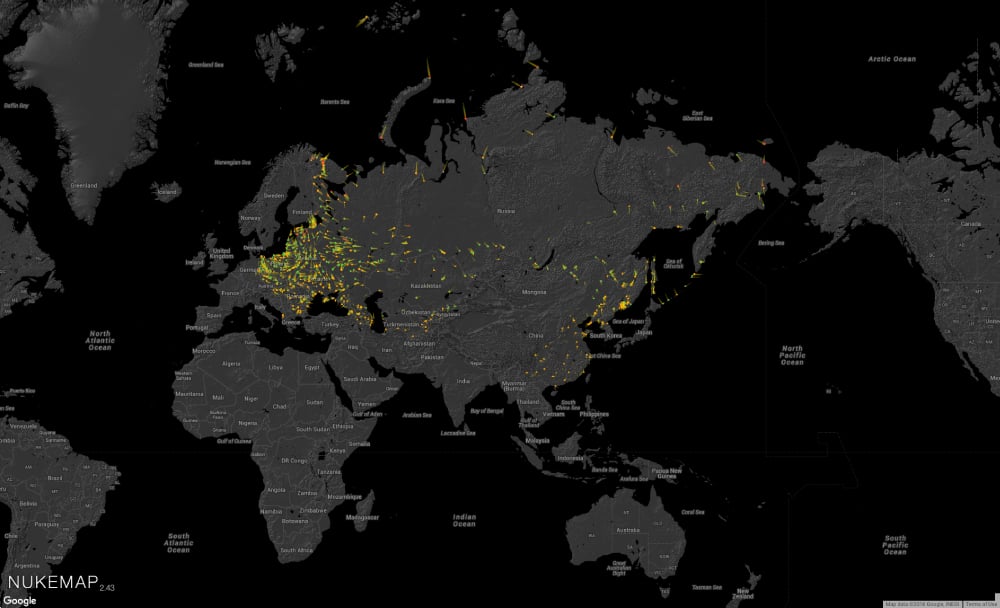A terrifying interactive map visualises and calculates the casualties of nuclear war in 2016 based on a 1956 list of 1,100 US Cold War targets
The Future of Life Institute and Alex Wellerstein have created a frightening but compulsively fascinating interactive map of the fallout and damage if nuclear bombs were dropped on targets in 2016.
It is 71 years since the first atomic bombs were dropped on Hiroshima and Nagasaki and it is a pure miracle that no cities in the world have since succumbed to such a terrifying fate.
It is only through the strategy of mutual assured destruction that the world’s stockpiled arsenal of nuclear weapons have been kept unsheathed. But what if?
A collaboration between the Future of Life Institute (FLI), a volunteer organisation focused on decreasing existential threats to humanity, and Alex Wellerstein from the Stevens Institute for Technology in New Jersey, has resulted in a terrifying new interactive map that visualises the fallout from nuclear blasts and their aftermath on targeted cities around the world.
Wellerstein, who developed the NUKEMAP a few years ago and was a technical consultant for the Manhattan TV series, basically accessed a 1956 US list of 1,100 nuclear targets in the Soviet Union, the Eastern Bloc, China and North Korea, which had been released by the US National Security Archive, and worked with FLI to visualise the data set.
The map effectively models the nuclear fallout and possible casualties from detonated bombs.
The map imagines what would happen if bombs had been dropped on all 1,100 targets on a single day and simulates the direction of the radioactive fallout across three days: 29 April, 30 April and 1 May 2016.
The map lets you click on any one of the locations and, based on a specific yield of kilotons of explosive power, assess the likely impact of a nuclear strike.
For example, one of the targets was the city of Erfurt, which would have been in East Germany. A nuclear weapon with 1,200 kilotons of explosives would have led to 92,370 instant casualties with a further 132,500 in the following three days.
![]()
As you can imagine, a significant number of warheads on the 1956 list would have been targeted at Moscow. Just one strike on the former Soviet capital would by today’s standards kill 1.2m people instantly with a further 3.4m casualties in the days that followed.
![]()
A nuclear strike on the North Korean Capital of Pyongyang would kill 489,310 people on impact with a further 1.1m casualties in the immediate three-day aftermath.
![]()
It’s a terrifying vision that thankfully hasn’t come to pass. But the weapons haven’t gone away, you know.
And for the rest of us still on this planet? Well, if enough smoke from nuclear fires rose high into the stratosphere, the Future of Life Institute estimates it would spread across the entire planet, potentially killing most of Earth’s 7bn people.
The map only takes into account US targets from 1956. But what of the other powerful arsenals belonging to powers including the UK, India, Pakistan, China and the former Soviet republics?

Gigglebit is Siliconrepublic.com’s daily dose of the funny and fantastic in science and tech, to help start your day on a lighter note.
Nuclear war image via Shutterstock